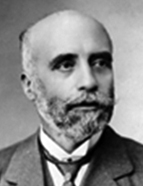

As regards popular language, he said that «[… ] not only does it disregard rules, it often serves to explain many cultured speech phenomena ». His concept of the Portuguese lexicon comprehended different moments of the history of the language and its dialectal variety: «endless words and expressions that make up the idiomatic wealth that was lost» (Revista Lusitana, IV, 337-338).
It was also in the 1890s, that Leite began publishing his pivotal work in the field of archaeology, Religiões da Lusitânia [Religions in Lusitania] (1897, 1905, 1913). The study of religions was presented as a piecemeal contribution to a broader history of Lusitania. His analysis was divided into three periods: prehistory, on the peoples inhabiting Portugal in the Neolithic period; proto history, regarding the geography, ethnology, and ethnography of Lusitania; and history from the Roman conquest until the time of the Suevi. His study of more remote periods was anchored on archaeological data and the analysis of material remains, while his work on more recent periods was predominantly ethnological. A relevant topic in this work (indeed, already visible in his Portugal pré-historico) is his criticism of Alexandre Herculano’s theory on the non-continuity between the Portuguese and the Lusitanians. Leite argued that the peoples of Lusitania should also feature among the ancestors of the Portuguese for two main reasons: their territories partially overlapped; the origin of the Portuguese language could be considered a modification of the language used by the Luso-Romans, and traces of continuity in the peoples of that region could be found in their customs, superstitions and legends (See Religiões da Lusitânia, 1897, xxv-xxvi).
Between 1899 and 1901, he studied Romance Philology in the École des Hautes Études in Paris where he was awarded the Tenured Student Diploma in the Field of History and Philology. His doctoral thesis, Esquisse d’une dialectologie portugaise (1901), written in French, was submitted to Sorbonne University. It was published in Paris and widely disseminated and cited in Romance studies bibliography. Using the linguistic materials he had compiled since the 1880s, he advanced a systematisation of Portuguese dialects, making a distinction between continental, insular and extra-European dialects, the dialect of Portuguese Jews in Hamburg and Amsterdam and Portuguese co-dialects (Galician, Mirandese, Guadramilese and Riodonorese).
